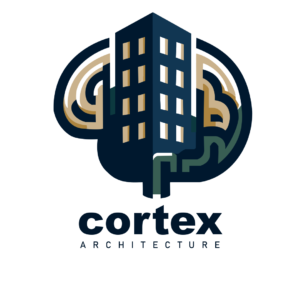Real-World Case Studies Meet Future Trends: How Cognitive Architecture is Shaping Our Spaces

Introduction
Cognitive architecture is no longer just a theoretical concept—it’s actively transforming the way we design homes, offices, hospitals, and public spaces. By combining real-world case studies with cutting-edge trends like AI-driven design, data analytics, biophilic integration, and sustainable innovation, architects are creating spaces that enhance cognitive function, emotional well-being, and human experience.
In this article, we explore how successful projects around the world are already leveraging these principles and how emerging technologies are pushing cognitive architecture into new frontiers.
The Power of Cognitive Architecture: Why It Matters
Cognitive architecture focuses on designing spaces that interact with the human mind, influencing productivity, stress levels, and overall well-being. With advancements in neuroscience, psychology, and data-driven design, architects now have scientific insights to create environments that enhance focus, relaxation, and creativity.
Case Studies: Cognitive Architecture in Action
1. The Eden Project – Biophilic Design for Mental Well-Being
The Eden Project in the UK is a prime example of biophilic design—integrating nature into architecture to improve cognitive and emotional states. The lush greenhouses, filled with diverse plant life, create an immersive environment that reduces stress and enhances mental clarity. Studies show that access to greenery and natural elements significantly improves focus and relaxation, making biophilic architecture a powerful tool for urban and indoor spaces.
2. Bosco Verticale – Nature-Integrated Urban Living
The Bosco Verticale (Vertical Forest) in Milan takes the concept of green architecture to new heights—literally. These residential towers feature over 20,000 plants and trees, providing not only aesthetic appeal but also improved air quality and psychological benefits for residents. The project showcases how cities can integrate sustainable, cognition-enhancing elements into modern housing.
3. Smart Workspaces – AI and Data-Driven Cognitive Design
AI-powered architecture is redefining office spaces. Companies like Microsoft and Google are using data analytics to optimize office layouts, lighting, and even air quality to enhance employee focus and creativity. Real-time sensor-driven adjustments to temperature, noise levels, and seating arrangements ensure that work environments are tailored to human cognitive needs, leading to improved performance and well-being.
Emerging Trends: Where Cognitive Architecture is Headed
AI and Machine Learning in Design
Artificial intelligence is allowing architects to design spaces that adapt in real-time to human behavior. AI-driven algorithms can now analyze movement patterns, environmental conditions, and user preferences to create personalized environments that support productivity, relaxation, or collaboration.
Data-Driven Decision Making
Data analytics is transforming architecture by providing insights into how people interact with spaces. Smart buildings now use real-time data to optimize layouts, air circulation, and energy efficiency, creating environments that boost cognitive performance while reducing stress.
Sustainability and Cognitive Well-Being
Green architecture is evolving beyond sustainability to directly impact mental health and cognitive performance. Innovations like self-regulating facades, passive cooling techniques, and bio-integrated materials are being used to create spaces that promote comfort and reduce cognitive fatigue.
The Future of Cognitive Architecture
As technology and neuroscience continue to shape architectural practices, cognitive architecture is expected to become the standard rather than the exception. The integration of AI, biophilia, neuroscience, and sustainable innovation will lead to spaces that are not only efficient but also supportive of human cognitive needs.
Explore More: Watch Our Video and Read the Full Article
For a deeper dive into these case studies and trends, watch our latest Cognitive Architecture Series video on YouTube! 🎥📺
Want to explore practical ways to apply these principles in your own space? Stay tuned for our next blog post and video:
👉 Practical Tips for Implementing Cognitive Architecture in Different Spaces.
What are your thoughts on the future of cognitive architecture? Share your opinions in the comments below!

One Comment
I have learn some excellent stuff here. Definitely value bookmarking for revisiting. I surprise how so much attempt you place to create this type of wonderful informative website.